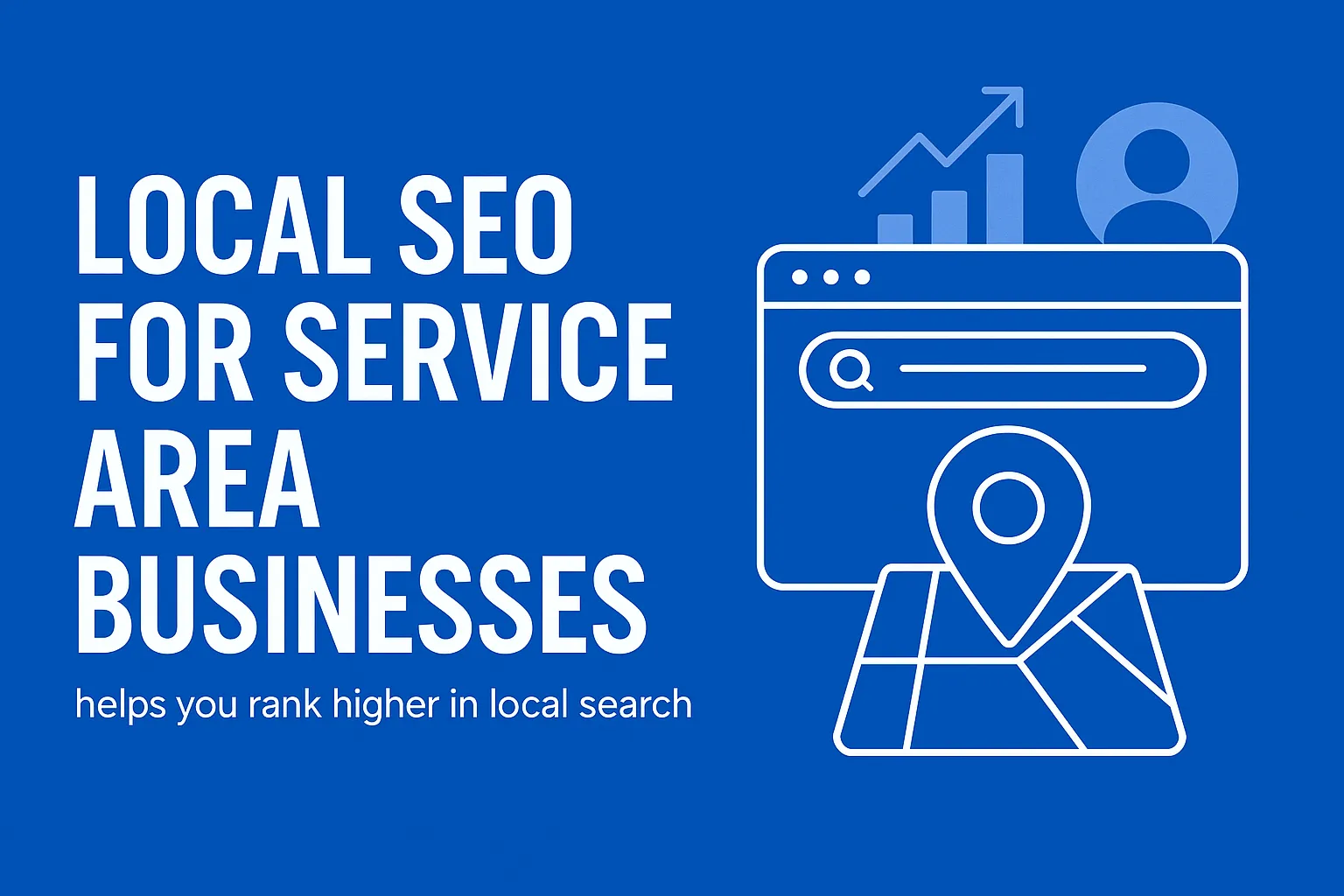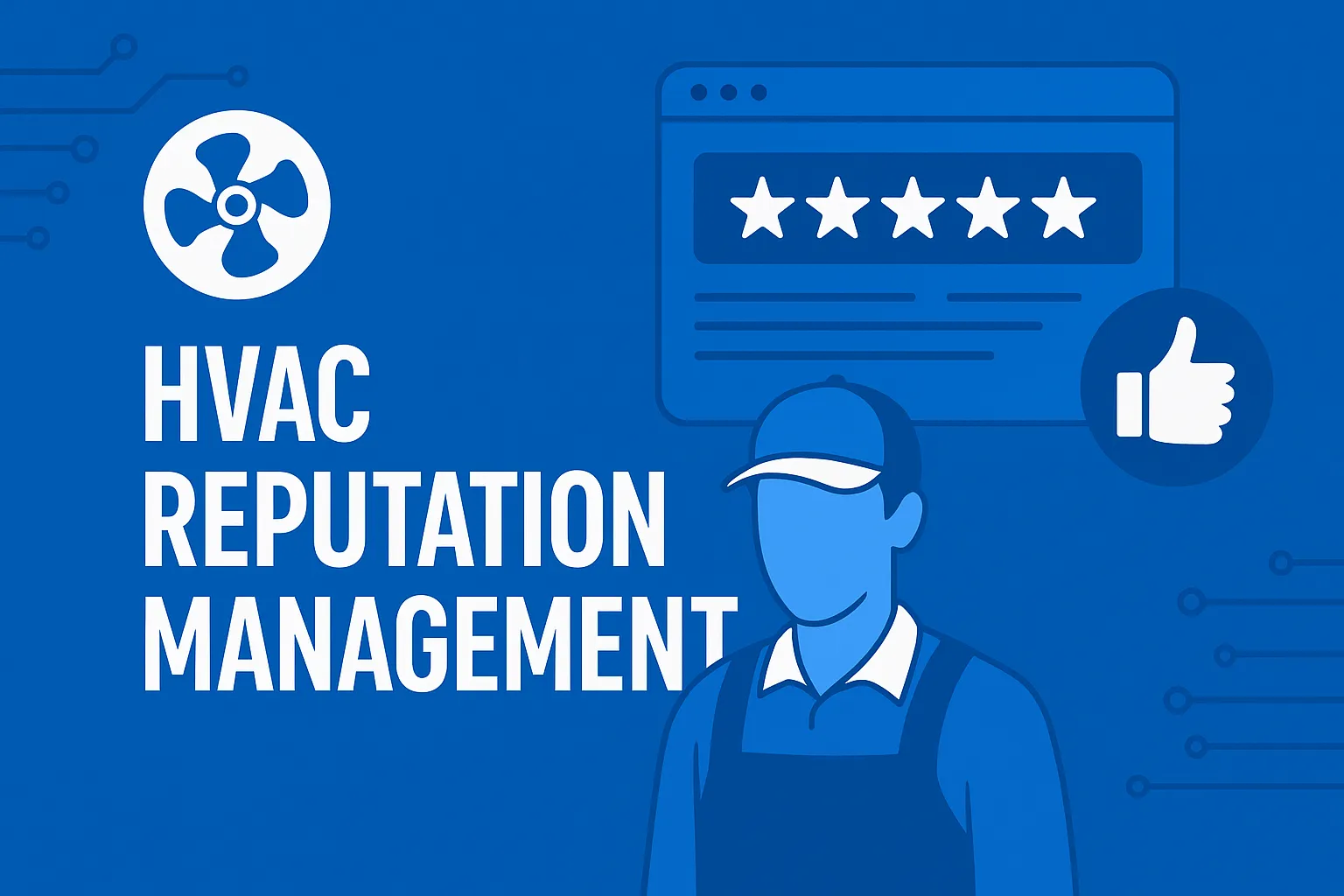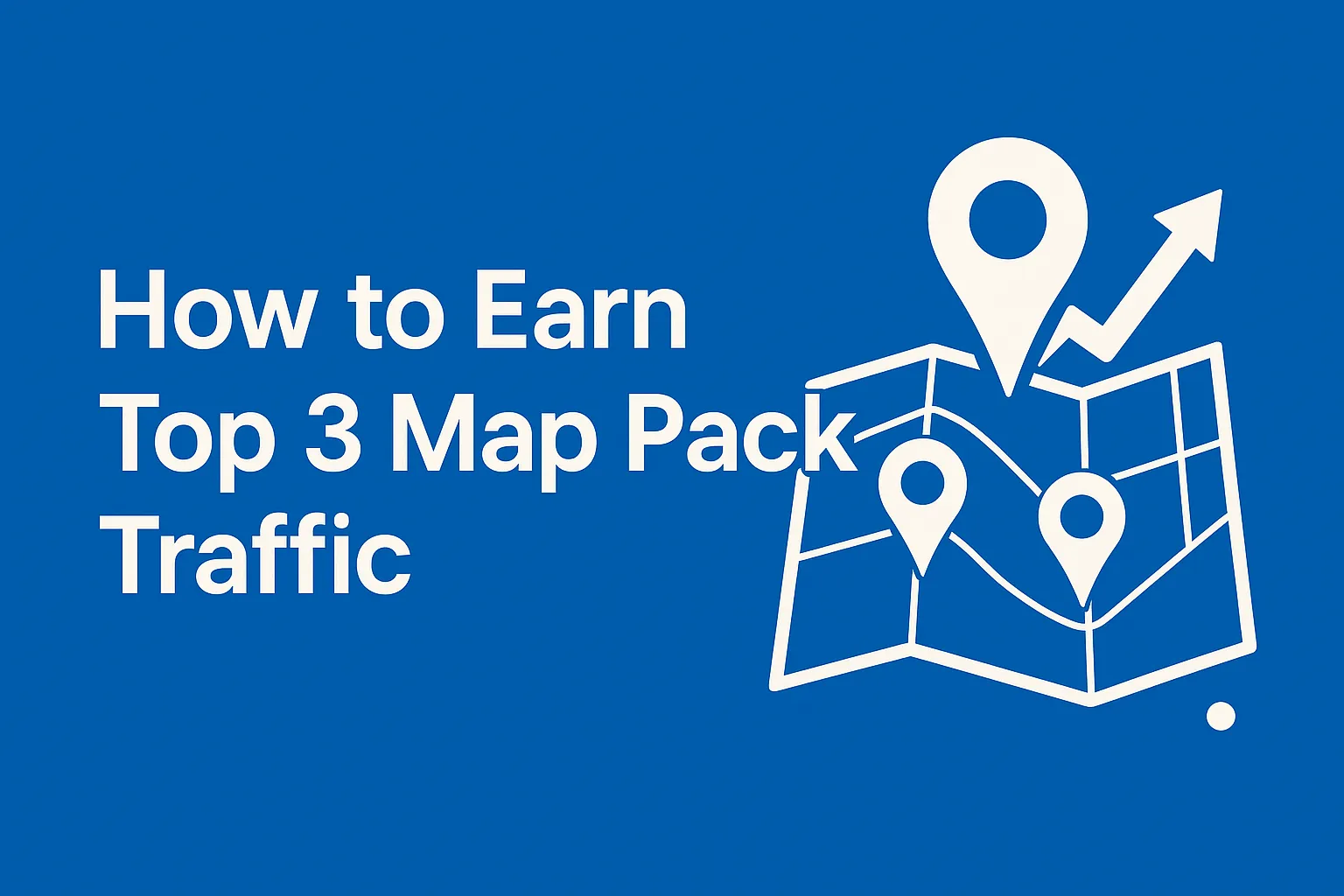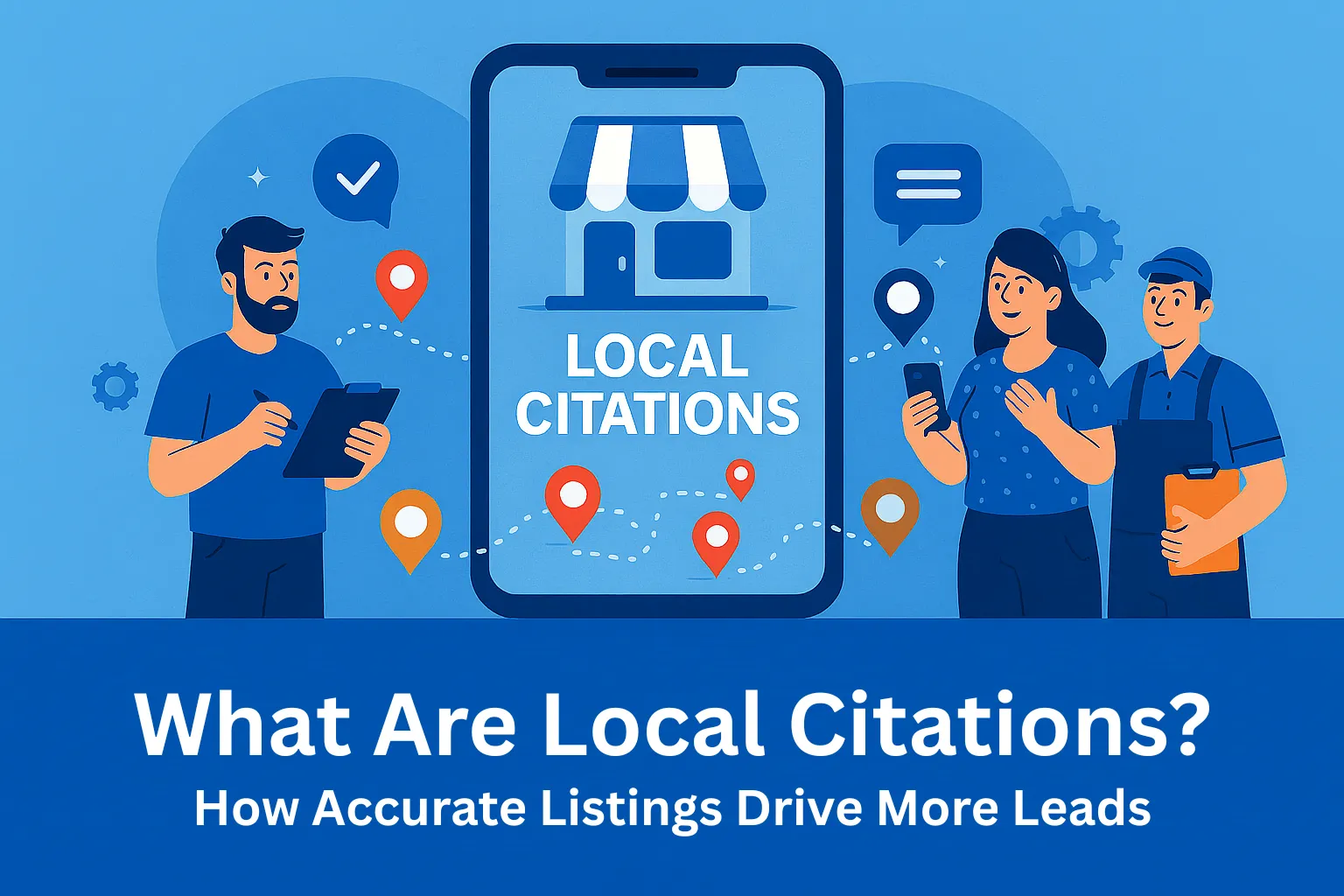Before You Go—Let’s Boost Your Leads!
Join our community of successful HVAC and Plumbing contractors who trust Klutch Growth to enhance their online presence.
Klutch Growth Blog
Local SEO for Service Area Businesses: Rank and Get More Leads
You don’t need a storefront to win in your local market.
If your business serves customers across towns or neighborhoods, like plumbers or HVAC, your growth depends on how well you show up online.
That’s where local SEO for service area businesses comes in.
It decides whether people find you in search results or never see you at all. Local SEO helps your service area pages rank for the places you actually serve, not just your business address. It also makes sure your Google Business Profile connects you with people nearby who are ready to hire.
This guide shows you how to boost your visibility, attract more qualified leads, and build trust in every area you cover. You’ll see what works and how to apply it to your own service area business.

What is a Service Area Business?
A Service Area Business (SAB) travels to customers instead of customers coming to a physical storefront. Unlike restaurants or retail shops with fixed locations, service area businesses serve customers across multiple cities, neighborhoods, or regions from a central office or home base.
Most home service companies fall into this category. Think of HVAC contractors, plumbers, electricians, cleaning services, pest control, landscapers, and roofers. These companies usually have a central dispatch point but don’t handle walk-in customers.
The main difference between SABs and traditional storefronts lies in how Google views location. Storefront businesses gain visibility in their area because customers physically visit them. SABs, on the other hand, must tell Google where they provide services. This brings unique challenges and opportunities that many business owners overlook.
Google evaluates service area businesses based on three key factors:
- how close the business is to the searcher,
- how relevant the business is to the query, and
- how prominent the business profile appears online.
Without proper local SEO, it’s hard to perform well in any of these areas.
Why Local SEO Is Essential for Service Area Businesses
Local search drives most service calls for service area businesses.
For instance, when an air conditioner stops working or a pipe bursts, people search “near me” to find help fast. Visibility in Google Maps and the Local Pack determines who gets the call.
Over 80% of local searches happen on mobile. Many use voice commands like “Hey Google, find a plumber near me.” If your business isn’t in those results, someone else gets the lead.
The Local Pack captures most clicks for service searches. Businesses in the top three positions often get three to five times more leads than those ranked lower. That difference can mean thousands in extra revenue for high-value jobs like HVAC installs or roof repairs.
Local SEO for service area businesses also delivers stronger returns than paid ads in the long run. Ads stop when the budget runs out. Local rankings, once earned, can bring steady leads for months or years.
Strong local SEO means more calls, more booked jobs, and lasting visibility in your target areas.
Google Business Profile for Service Area Businesses
Your Google Business Profile (GBP) serves as the foundation for all local SEO efforts. For service area businesses, proper GBP setup requires specific strategies that differ from storefront optimization.
Setting Up Without a Public Address
Most Service Area Businesses operate from home offices or warehouse locations they don’t want customers visiting. During verification, select “I deliver goods and services to my customers” and hide your address from public view.
The verification process typically requires a postcard sent to your business address, but customers will only see your service area, not your specific location.
Defining Your Service Area in GBP
Instead of using Google’s radius option, list specific cities where you provide services: like “Miami, Coral Gables, Aventura, Doral, Kendall.” This approach helps Google understand exactly where you want to appear in local searches and aligns better with how customers search.
Focus on 5-15 cities where you can provide excellent service rather than claiming unrealistic coverage areas that dilute your local relevance.
Optimizing Categories, Q&A, and Posts
Choose specific primary categories like “HVAC Contractor” or “Plumber” rather than generic options.
Add secondary categories for related services like “Air Conditioning Repair Service” or “Drain Cleaning Service.”
Use Google Posts to share seasonal promotions, emergency services, and recent projects.
Add Q&A entries addressing common questions like “Do you offer 24/7 emergency service?” or “What areas do you serve?” to qualify leads before they contact you.
Leveraging Reviews and Media to Build Trust
Request reviews after completing quality work through follow-up texts or emails. Respond to all reviews professionally, thanking customers for positive feedback and addressing concerns in negative reviews.
Upload photos of completed projects, uniformed technicians, and equipment to build trust. Videos showcasing installations or repairs perform exceptionally well and demonstrate expertise better than text descriptions.
Service Area Pages (SAPs) for Local SEO
Service area pages extend your local visibility beyond your Google Business Profile. These dedicated pages target specific cities where you provide services, helping you rank for location-specific searches while providing detailed information about your services in each area.
What Service Area Pages Are and Why They Matter
Service area pages are individual web pages optimized for specific cities or neighborhoods you serve. Unlike your main service pages, SAPs combine your core services with local context.
An HVAC company in Florida might have separate pages for “AC Repair in Miami” and “AC Repair in Fort Lauderdale” with localized content for each market.
Service area pages help you scale local visibility across multiple markets. Instead of relying solely on your GBP for all locations, you can rank organically for searches like “emergency plumber NYC” or “HVAC maintenance Miami.” This approach captures customers who prefer clicking website results over map listings.
Best Practices for Service Area Pages
Each service area page needs unique, valuable content that goes beyond basic service descriptions. Include local context like common HVAC problems in Miami’s humid climate or plumbing challenges in NYC’s older buildings. Add customer testimonials from that specific area and photos of recent projects completed locally.
Structure each page with clear service descriptions, pricing information when appropriate, and prominent contact options. Include a local phone number if available and emphasize your familiarity with local building codes, permit requirements, or seasonal service needs.
Common Service Area Pages Pitfalls
The biggest mistake is creating duplicate content across multiple city pages. Changing only the city name while keeping identical service descriptions provides no value to users or search engines. Google recognizes thin content and may penalize pages that don’t offer unique value.
Over-optimization kills credibility and rankings. Stuffing “Miami HVAC repair” into every paragraph sounds unnatural and hurts user experience. Focus on naturally mentioning the location when it adds context or value to the information.
Template for Building Scalable Service Area Pages
Start with a local headline: “Emergency Plumbing Services in NYC” followed by a brief introduction highlighting your local expertise. Include a section on common local service needs, another on your specific solutions, customer reviews from that area, and clear next steps for scheduling service.
End each page with service area boundaries and response times. “We serve all five NYC boroughs with 2-hour emergency response” or “Covering Miami-Dade County with same-day AC repair service” sets clear expectations while reinforcing your local presence.
Advanced Local SEO Strategies for SABs
Beyond basic Google Business Profile optimization and service area pages, advanced strategies can give you significant competitive advantages in local search results.
Using Local Services Ads Alongside Organic Efforts
Local Services Ads (LSAs) appear above organic results and the local pack for service-related searches. These ads require background checks and license verification, which builds immediate trust with potential customers. LSAs work particularly well for emergency services when customers need immediate help.
Combine LSAs with strong organic rankings for maximum local visibility. When you appear in both LSAs and the local pack, you dominate the search results page. This dual presence significantly increases your chances of capturing high-intent leads.
Building Local Backlinks and Citations
Local citations (mentions of your business name, address, and phone number) on relevant directories strengthen your local authority. Focus on industry-specific directories like HVAC.com or plumbing trade associations rather than generic business listings.
Partner with local suppliers, manufacturers, and complementary businesses for natural backlink opportunities. A Miami HVAC company might get mentioned on a local construction company’s preferred vendor page or in a home improvement blog’s resource section.
Creating Supporting Content for Topical Authority
Develop blog content that addresses local service needs and seasonal trends. NYC HVAC businesses should write about preparing heating systems for harsh winters, while Miami companies can focus on AC efficiency during hurricane season and extreme heat.
This supporting content helps establish expertise while targeting long-tail keywords that service area pages might miss. Articles like “Signs Your Miami AC Needs Repair Before Hurricane Season” capture early-stage customers who aren’t ready to call but are researching potential problems.
Multi-Location SEO Tactics for Expanding Businesses
If you’re expanding into new markets, establish local presence gradually rather than claiming dozens of new cities immediately. Start with 3-5 adjacent cities where you can realistically provide excellent service, then expand as you build reputation and capacity.
Create separate GBP listings only if you have genuine local presence like a satellite office or storage facility. Most Service Area Businesses should use one primary GBP with an expanded service area rather than multiple profiles.
Common Issues Service Area Businesses Face (and How to Fix Them)
Even well-intentioned SABs encounter local SEO problems that hurt their visibility and lead generation. Understanding these issues helps you avoid common mistakes and fix existing problems.
Ranking Outside Service Area
Google sometimes shows your business for searches outside your defined service area, especially if you’ve received reviews or citations from those locations. This wastes marketing budget and creates service delivery problems when customers expect immediate response from distant locations.
Review your GBP service area settings and remove any cities where you don’t actually provide reliable service.
Update your website content to clearly define service boundaries and response times for different areas.
Profile Suspensions or Disabled Listings
GBP suspensions often result from policy violations like keyword stuffing in business names, fake addresses, or inappropriate categories.
A business name “Miami Best HVAC Repair Services Inc” may violate naming guidelines, while using a UPS store address for verification can trigger suspensions. Make sure your business name in your GBP exactly matches your business name in the real-world.
If suspended, identify the specific policy violation before appealing. Remove problematic content, update business information to match official registration documents, and provide clear documentation of your legitimate business operations during the appeals process.
Spam and Fake SAB Listings
Fake SAB listings with manipulated addresses or service areas can outrank legitimate businesses temporarily. These listings often use keyword-stuffed names like “Emergency Plumber NYC Best Service” and claim unrealistic service areas covering entire states.
Report obvious spam listings through Google’s business listing reporting tool. Focus on strengthening your own profile with genuine reviews, consistent citations, and quality content rather than spending excessive time fighting fake competitors.
Algorithm Updates Impacting SABs
Google’s local algorithm updates can significantly impact SAB rankings. The vicinity update prioritized businesses closer to searchers, while other updates focused on review quality and citation consistency. These changes sometimes reduce visibility for perfectly legitimate businesses.
Monitor your local rankings regularly and maintain consistent optimization efforts rather than making dramatic changes after algorithm updates. Strong fundamentals like accurate business information, quality reviews, and relevant content provide stability during algorithm fluctuations.
How to Track SEO Performance for Service Area Businesses
Measuring local SEO success requires tracking multiple metrics beyond basic website traffic. Service area businesses need visibility into local rankings, lead quality, and conversion performance across different service areas.
GBP Insights for Lead Generation Metrics
Google Business Profile Insights shows how customers find and interact with your profile through phone calls, direction requests, and website clicks.
The “How customers search for your business” section reveals whether people find you through direct searches (branded terms) or discovery searches (category searches), with discovery searches indicating strong local SEO performance.
Local Rank Tracking for Service Area Pages
Use tools like BrightLocal, Whitespark, or SEMrush to monitor rankings for location-specific keywords like “HVAC repair Miami” and “emergency plumber NYC.”
Set up tracking for 5-10 relevant keywords per city you serve, monitoring both mobile and desktop rankings since most local searches happen on mobile devices.
Conversion Tracking and Lead Attribution
Implement call tracking numbers on service area pages to measure which locations generate qualified leads, using different numbers for Miami and NYC pages to understand market performance differences.
Set up Google Analytics goals for form submissions and phone clicks, plus UTM parameters for GBP links to track which optimization efforts drive actual business results.
Engagement Tracking for Content Performance
Use heatmap tools like Hotjar to track visitor interactions on service area pages, including scroll depth and click patterns.
Monitor page load speeds across all devices, aiming for under 3 seconds on mobile since local search users expect fast-loading pages and slow sites hurt both rankings and conversions.
FAQs About Local SEO for Service Area Businesses
Can service area businesses rank without a physical address?
Yes, service area businesses can achieve strong local rankings without displaying a public address. Choose “I deliver goods and services to my customers” during GBP setup and hide your address from public view. Your local rankings depend more on service area relevance, consistent citations, and quality reviews than address visibility.
How many service areas should I list in GBP?
List only the areas you can genuinely serve within a reasonable time frame. For most service area businesses, that means around 5 to 20 cities or ZIP codes. Listing too many weakens your local relevance and may confuse Google about where you actually operate. Focus on your core markets where you can respond quickly, deliver consistent service, and earn reviews.
Do service area pages hurt SEO if content is similar?
Duplicate or thin content across multiple city pages can hurt your overall SEO performance. Each service area page needs unique, valuable content with local context, area-specific testimonials, and relevant local information. If you can’t create substantial unique content for each city, consider consolidating into regional pages like “NYC Metro Area Plumbing Services” with neighborhood-specific sections.
How long until my service area business (SAB) ranks in the local pack?
Local pack rankings typically improve within 3-6 months of consistent optimization, but timelines vary based on competition and existing online presence. New businesses need more time to build review volume and citations, while established businesses often see faster improvements. Competitive markets like mega cities require more aggressive optimization and longer timeframes than suburban areas.
Can SABs run Google Local Services Ads without SEO?
Local Services Ads provide immediate visibility but work best combined with strong organic presence. LSAs require ongoing budget and stop generating leads when paused, while organic local SEO provides compound returns that continue long-term. The most successful service businesses use both strategies to maximize local search presence and reduce dependence on paid advertising.
Final Thoughts: Scaling a Service Area Business with Local SEO
Local SEO success for service area businesses requires consistent effort across multiple optimization areas. Your Google Business Profile serves as the foundation, but service area pages, local content, and ongoing optimization create sustainable competitive advantages.
The businesses that succeed long-term focus on providing genuine value to customers in each market they serve.
A local business we helped build local citations and optimize their Google Business Profile saw a 130% increase in lead generation within three months. They also grew Map Pack calls from 3 to 21 in the same period. This growth came from comprehensive optimization, not quick fixes or shortcuts.
Start with one or two cities where you can provide exceptional service, then expand gradually as you build capacity and reputation. Service area businesses entering new markets should establish local partnerships, understand regional service needs, and create content that addresses area-specific challenges.
Document your expansion process and optimization results. Track which strategies drive the most qualified leads in each market. This data helps you replicate success as you scale into additional service areas.
Local SEO improvements compound over time as well. Quality reviews attract more customers, leading to additional reviews. Strong local rankings increase visibility, generating more opportunities for positive customer experiences. This cycle builds sustainable advantages that competitors struggle to match.
Ready to grow your Service Area Business with local SEO?
Klutch Growth can help optimize your Google Business Profile, build local citations, and strengthen your online visibility. As an experienced digital marketing agency for HVAC and plumbing companies, we’ve helped businesses increase leads and dominate local search.
Schedule your consultation today to build a stronger local presence and turn searches into real customers.
Recent Posts
November 14, 2025
November 10, 2025
November 3, 2025
October 27, 2025




